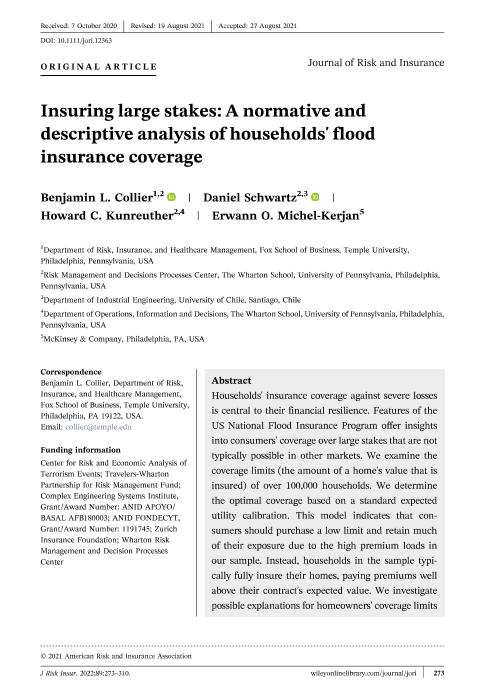Households' insurance coverage against severe losses is central to their financial resilience. Features of the US National Flood Insurance Program offer insights into consumers' coverage over large stakes that are not typically possible in other markets. We examine the coverage limits (the amount of a home's value that is insured) of over 100,000 households. We determine the optimal coverage based on a standard expected utility calibration. This model indicates that consumers should purchase a low limit and retain much of their exposure due to the high premium loads in our sample. Instead, households in the sample typically fully insure their homes, paying premiums well above their contract's expected value. We investigate possible explanations for homeowners' coverage limits and conclude that some combination of industry practices that emphasize fully insuring and probability distortions in decision-making are likely explanations.
Insuring large stakes : a normative and descriptive analysis of households' flood insurance coverage

Contenido multimedia no disponible por derechos de autor o por acceso restringido. Contacte con la institución para más información.
Households' insurance coverage against severe losses is central to their financial resilience. Features of the US National Flood Insurance Program offer insights into consumers' coverage over large stakes that are not typically possible in other markets. We examine the coverage limits (the amount of a home's value that is insured) of over 100,000 households. We determine the optimal coverage based on a standard expected utility calibration. This model indicates that consumers should purchase a low limit and retain much of their exposure due to the high premium loads in our sample. Instead, households in the sample typically fully insure their homes, paying premiums well above their contract's expected value. We investigate possible explanations for homeowners' coverage limits and conclude that some combination of industry practices that emphasize fully insuring and probability distortions in decision-making are likely explanations.

